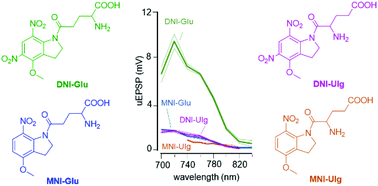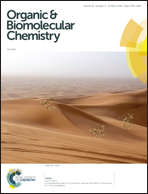High efficiency two-photon uncaging coupled by the correction of spontaneous hydrolysis†
Abstract
Two-photon (TP) uncaging of neurotransmitter molecules is the method of choice to mimic and study the subtleties of neuronal communication either in the intact brain or in slice preparations. However, the currently available caged materials are just at the limit of their usability and have several drawbacks. The local and focal nature of their use may for example be jeopardized by a high spontaneous hydrolysis rate of the commercially available compounds with increased photochemical release rate. Here, using quantum chemical modelling we show the mechanisms of hydrolysis and two-photon activation, and synthesized more effective caged compounds. Furthermore, we have developed a new enzymatic elimination method removing neurotransmitters inadvertently escaping from their compound during experiment. This method, usable both in one and two-photon experiments, allows for the use of materials with an increased rate of photochemical release. The efficiency of the new compound and the enzymatic method and of the new compound are demonstrated in neurophysiological experiments.



 Please wait while we load your content...
Please wait while we load your content...